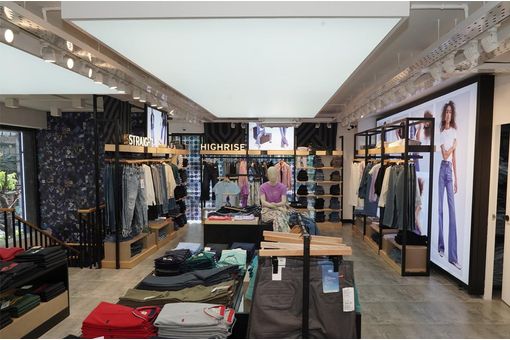Interviews
Conductive Fiber Manufacturers Council to be formed
19 Mar '11
3 min read
Conductive fibers occupy their own unique niche in the wire and textile market place. The industry's identity is not distinctive, with conductive fibers treated as another wire or textile. These manufactures are now joining together with a trade council, the Conductive Fiber Manufacturers Council.
Conductive fibers have a long and glorious history. The filament in Thomas Edison's light bulb was made of carbonized sewing thread. Of the hundreds Edison tried, this was the first filament that met his needs for resistance and life span.
Conductive fibers consist of two groups: (1) intrinsically conductive fibers and conductive polymers which constitute the largest portion of the industry, with carbon fiber being the biggest portion. (2) The second group includes non-conductive or less conductive substrates, which are then either coated or embedded with an electrically conductive element, often carbon, nickel, copper, gold, silver, or titanium. These substrates typically include cotton, polyester, nylon, and stainless steel and high performance fibers such as aramids and PBO.
Many industries, including military, aerospace, aviation, medical, textile, transportation, are demanding changes in the nature of wire in order to increase their performance. Wire and cable revenues in the US are a $22 billion (US$) industry, and 6 to 7 times as large internationally. Conductive fibers straddling both worlds of textiles and wires, are sold either by weight or length, and measured in denier or AWG.
Uses for conductive fibers and textiles may include static dissipation, EMI shielding, signal and power transfer in low resistance versions, and as a heating element in higher resistance versions. Their benefits over solid or stranded metal wires come from conductive fibers' flexibility, low weight with high strength, extreme durability in some cases, and the ability to use them in existing textile and wire machinery (weaving, sewing, braiding, twisting, stranding, etc.) Some conductive fibers have high temperature durability and can be soldered like solid wire.
Conductive fibers represent a vast growth market which is largely untapped. As more engineers and discover the benefits of conductive fibers, their market share is destined to greatly increase.
The Conductive Fiber Manufacturers Council was conceived in 2007 as a result of growth and fragmentation in the industry and too little information being readily available to engineers and designers about conductive fibers and fabrics. After talks with industry leaders, Hugo Trux who has experience in marketing and production of a conductive fiber recently launched the Council as a trade association.
The Council's benefits and strategic plan includes:
Ability to speak with one voice re regulatory, standardization issues
• Developing standardized product testing and reporting standards to define and measure our products in a uniform manner to facilitate specifications, utilization, and discussion in the engineering and manufacturing world.
Conductive fibers have a long and glorious history. The filament in Thomas Edison's light bulb was made of carbonized sewing thread. Of the hundreds Edison tried, this was the first filament that met his needs for resistance and life span.
Conductive fibers consist of two groups: (1) intrinsically conductive fibers and conductive polymers which constitute the largest portion of the industry, with carbon fiber being the biggest portion. (2) The second group includes non-conductive or less conductive substrates, which are then either coated or embedded with an electrically conductive element, often carbon, nickel, copper, gold, silver, or titanium. These substrates typically include cotton, polyester, nylon, and stainless steel and high performance fibers such as aramids and PBO.
Many industries, including military, aerospace, aviation, medical, textile, transportation, are demanding changes in the nature of wire in order to increase their performance. Wire and cable revenues in the US are a $22 billion (US$) industry, and 6 to 7 times as large internationally. Conductive fibers straddling both worlds of textiles and wires, are sold either by weight or length, and measured in denier or AWG.
Uses for conductive fibers and textiles may include static dissipation, EMI shielding, signal and power transfer in low resistance versions, and as a heating element in higher resistance versions. Their benefits over solid or stranded metal wires come from conductive fibers' flexibility, low weight with high strength, extreme durability in some cases, and the ability to use them in existing textile and wire machinery (weaving, sewing, braiding, twisting, stranding, etc.) Some conductive fibers have high temperature durability and can be soldered like solid wire.
Conductive fibers represent a vast growth market which is largely untapped. As more engineers and discover the benefits of conductive fibers, their market share is destined to greatly increase.
The Conductive Fiber Manufacturers Council was conceived in 2007 as a result of growth and fragmentation in the industry and too little information being readily available to engineers and designers about conductive fibers and fabrics. After talks with industry leaders, Hugo Trux who has experience in marketing and production of a conductive fiber recently launched the Council as a trade association.
The Council's benefits and strategic plan includes:
Ability to speak with one voice re regulatory, standardization issues
• Developing standardized product testing and reporting standards to define and measure our products in a uniform manner to facilitate specifications, utilization, and discussion in the engineering and manufacturing world.
Popular News
Leave your Comments
Therese Premler-Andersson
Textile Machinery Association of Sweden (TMAS)
Siddhaarth Oberoi
Siddhaarth Oberoi Shirts (SOS)
































-Ltd..jpg?tr=w-120,h-60,c-at_max,cm-pad_resize,bg-ffffff)





.jpg?tr=w-120,h-60,c-at_max,cm-pad_resize,bg-ffffff)
.jpg?tr=w-120,h-60,c-at_max,cm-pad_resize,bg-ffffff)






